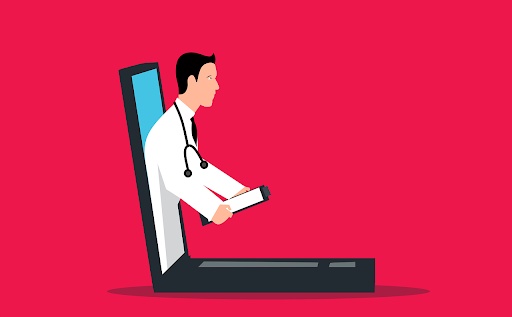Bioprinting, a revolutionary technology in the field of medical science, stands at the forefront of potentially solving one of the most pressing issues in healthcare today - the shortage of transplantable tissues and organs. This technology, rooted in the principles of 3D printing, has the potential to fabricate living tissues and organs layer by layer, using bio-inks made of living cells. This article delves into the world of bioprinting, exploring its current capabilities, challenges, and the future it promises in the realm of medicine.
The Concept of Bioprinting
Bioprinting involves a process akin to 3D printing, where instead of inorganic materials, layers of living cells are deposited to form tissue structures. The process begins with the preparation of a bio-ink, which is a blend of living cells and a supportive biocompatible material. Advanced printers, guided by computer models, precisely place these bio-inks to create tissue structures layer by layer.
Key Components of Bioprinting
Bio-inks: These are the materials used in bioprinting, consisting of living cells mixed with a supportive matrix. The choice of cells depends on the tissue or organ being printed.
Bioprinters: These are specialized printers capable of handling and depositing bio-inks with high precision.
Design Models: 3D models, often derived from medical imaging data, guide the bioprinting process to ensure anatomical accuracy.
Applications in Medicine
Bioprinting's primary application lies in tissue engineering and regenerative medicine. It has the potential to produce tissues for skin grafts, vascular grafts, and even complex organs like the liver or heart. Moreover, it can produce personalized tissues, matching the patient's own cells, thereby reducing the risk of rejection.
Current Achievements
Recent advancements have seen the successful bioprinting of simpler tissues like skin, blood vessels, and cartilage. These have potential applications in wound healing, vascular surgeries, and joint repair.
Potential Future Applications
In the future, bioprinting could revolutionize organ transplantation. Bioprinted organs, tailored to individual patients using their cells, could potentially eliminate waiting lists for organ transplants and the complications associated with immune rejection.
Challenges and Limitations
While promising, bioprinting in medicine faces several challenges:
Complexity of Organs: Human organs are complex structures with intricate vascular networks. Replicating this complexity is one of the most significant challenges.
Cell Viability: Ensuring that the printed cells remain viable and functional over time is crucial.
Ethical and Regulatory Hurdles: Bioprinting raises ethical questions and requires careful regulation to ensure safety and efficacy.
The Technological Evolution
The progress in bioprinting technology has been rapid, with advancements in bio-ink development, printing resolution, and speed. Innovations are continuously being made to improve the precision and viability of printed tissues.
Integration with Other Technologies
Bioprinting is increasingly being integrated with other cutting-edge technologies:
Stem Cell Research: Stem cells offer the potential for creating a wide range of tissue types, expanding the possibilities of bioprinting.
Artificial Intelligence and Machine Learning: These technologies are being used to optimize bioprinting processes and design models.
Nanotechnology: Incorporating nanomaterials into bio-inks can enhance the functionality and strength of bioprinted tissues.
Ethical and Regulatory Considerations
Bioprinting in medicine, while revolutionary, raises significant ethical and regulatory concerns. These include issues related to the source of cells, the reproduction of human organs, and the potential for creating life. Regulatory bodies are working on frameworks to ensure that bioprinting technology is developed and used responsibly.
The Future of Bioprinting
The future of bioprinting in medicine is incredibly promising. It holds the potential not just for tissue and organ replacement but also for:
Drug Testing and Development: Bioprinted tissues can be used for testing new drugs, reducing the reliance on animal models.
Personalized Medicine: Bioprinting can lead to more personalized medical treatments, tailored to individual patients' needs.
Research and Education: Bioprinted tissues can serve as models for medical research and education, improving our understanding of human biology.
Conclusion
In the burgeoning world of healthcare technology, Holon Solutions emerges as a beacon of innovation and human-centric design, embodying the unique philosophy of a "holon" – an entity that is simultaneously a whole and a part of a larger system. This guiding principle has not only shaped the company's identity but also its mission to revitalize the human element in healthcare services. As we conclude this exploration of Holon's groundbreaking journey, it becomes evident how their approach is revolutionizing the healthcare landscape.
At its core, Holon is dedicated to bridging the gap between advanced technology and the human touch in healthcare. Their sophisticated platform transcends traditional healthcare technology by offering tailored tools that simplify complex processes. This is not just about technological advancement; it's about creating a harmonious blend of efficiency and empathy. By employing proprietary sensor technology, Holon gathers patient data from various sources and seamlessly integrates it into personalized clinical workflows. This strategic automation is crucial, as it frees up valuable time for medical professionals, combating the prevalent issue of burnout and allowing them to focus on what truly matters – providing exceptional patient care.
What sets Holon apart in a competitive field is its unwavering commitment to reducing the administrative burdens that healthcare professionals face daily. The company harnesses smart technology and intuitive design to provide customized tools and services, striking a balance between delivering concrete business benefits and enhancing human interactions and outcomes. This dual focus is a testament to Holon's understanding of the intricate dynamics of healthcare – a sector where efficiency and human connection must coexist seamlessly.
A pivotal element of Holon's strategy is the Holon Community, crafted to optimize healthcare processes. This community-driven approach ensures the efficient delivery of patient data from multiple sources to any care point, integrating effortlessly with existing infrastructures. This not only boosts professional satisfaction but also dedicates more time to patient-centered care – a cornerstone of quality healthcare.
Innovation is deeply embedded in Holon's ethos, as showcased in their Innovation Lab. Here, the spirit of boundless exploration thrives, driven by a commitment to leveraging technology and design with a human touch. The lab's foundational principles – bold thinking, simplification, customer empathy, agility in a SaaS environment, and the humanization of interactions – fuel the development of groundbreaking solutions. This innovation-centric mindset accelerates the introduction of transformative changes in healthcare, mirroring Holon's ambition to be at the forefront of industry evolution.
Holon's relentless pursuit of redefining healthcare experiences is not just about addressing professional burnout or reducing administrative strain; it's about enriching the very essence of patient care. Their vision is steadfast – to infuse a more humane touch into healthcare innovation. As Holon continues to forge its path, it stands as a paragon of how technology and humanity can be intertwined to enhance both professional and patient experiences in healthcare. In a world where the coldness of technology often seems at odds with the warmth of human interaction, Holon Solutions is a reminder that the two can, and should, coexist in harmony for the betterment of all.


No comments yet